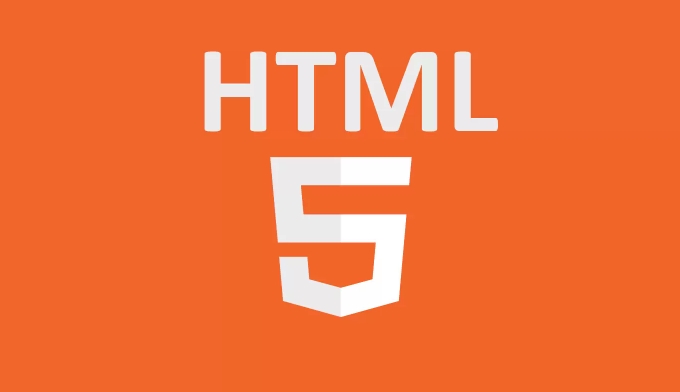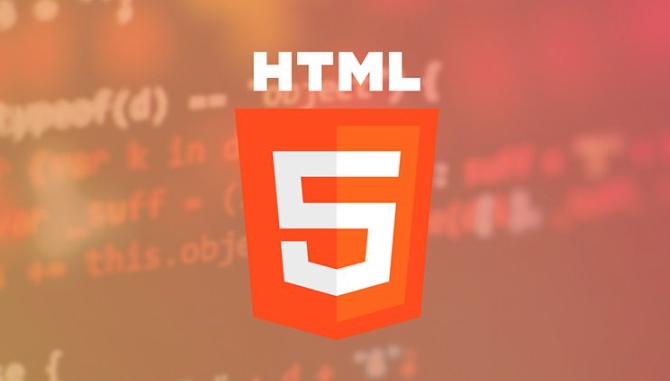 Web Front-end
Web Front-end
 H5 Tutorial
H5 Tutorial
 Adding drag and drop functionality using the HTML5 Drag and Drop API.
Adding drag and drop functionality using the HTML5 Drag and Drop API.
Adding drag and drop functionality using the HTML5 Drag and Drop API.
Jul 05, 2025 am 02:43 AMThe way to add drag and drop functionality to a web page is to use HTML5's Drag and Drop API, which is natively supported without additional libraries. The specific steps are as follows: 1. Set the element draggable="true" to enable drag; 2. Listen to dragstart, dragover, drop and dragend events; 3. Set data in dragstart, block default behavior in dragover, and handle logic in drop. In addition, element movement can be achieved through appendChild and file uploading can be achieved through e.dataTransfer.files. Note: PreventDefault() must be called to trigger drop. The mobile side supports poorly. It is recommended to use a third-party library for complex sorting.

It is actually not difficult to add drag and drop functions to web pages, and it can be achieved using HTML5's Drag and Drop API. It is natively supported and does not require the introduction of additional libraries. It is suitable for interactions such as file uploads and element sorting.

Preparation: Set draggable elements
To make an element be dragged, first add draggable="true" attribute to it. For example, a <div> or image cannot be dragged by default, but the drag event can be triggered after adding this property. <img src="/static/imghw/default1.png" data-src="https://img.php.cn/upload/article/000/000/000/175165462390139.jpeg" class="lazy" alt="Adding drag and drop functionality using the HTML5 Drag and Drop API."><pre class='brush:php;toolbar:false;'> <div draggable="true">Drag me to try</div></pre><p> Then you need to listen for several key events: <code>dragstart , dragover , drop and dragend . These events correspond to the actions of dragging start, dragging onto the target area, releasing the mouse, and dragging ends.
Basic process of dragging and dropping
The drag and drop operation is mainly divided into three steps:

- Start dragging : Set drag data and effects in
dragstartevent. - Drag to target area : Block default behavior in
dragover, otherwisedropcannot be triggered. - Free placement : Process data in
dropand complete logic.
For example, you want to drag a box into another area:
const dragEl = document.querySelector('#drag');
const dropZone = document.querySelector('#drop-zone');
dragEl.addEventListener('dragstart', (e) => {
e.dataTransfer.setData('text/plain', 'This is dragged data');
});
dropZone.addEventListener('dragover', (e) => {
e.preventDefault(); // The default behavior must be blocked in order to trigger drop
});
dropZone.addEventListener('drop', (e) => {
const data = e.dataTransfer.getData('text/plain');
console.log('Received data:', data);
});This completes the most basic drag-and-drop interaction.
Advanced Drag and Drop: Move elements or file uploads
In addition to passing text data, you can also use drag and drop to move DOM elements or upload files.
For example, if you want to drag an element from one container to another, you can append the node to the new location when drop :
dropZone.addEventListener('drop', (e) => {
const id = e.dataTransfer.getData('text/plain');
const draggedEl = document.getElementById(id);
dropZone.appendChild(draggedEl);
}); If it is a file upload scenario, such as dragging a local image to the page, you can get the file list through e.dataTransfer.files :
dropZone.addEventListener('drop', (e) => {
const files = e.dataTransfer.files;
for (let file of files) {
if (file.type.startsWith('image/')) {
const reader = new FileReader();
reader.onload = () => {
const img = document.createElement('img');
img.src = reader.result;
dropZone.appendChild(img);
};
reader.readAsDataURL(file);
}
}
});This part of the code can be directly previewed after dragging in the image.
Notes and FAQs
Some details are easily overlooked when using the HTML5 drag and drop API:
-
dragovermust callpreventDefault(), otherwisedropwill not be triggered - Different browsers may have different support for drag and drop styles, such as drag and cursor.
- Mobile support for native drag and drop is not very good, and additional touch events are required
- If you want to do complex drag-and-drop sorting, you can consider combining third-party libraries (such as SortableJS)
Basically all that is it. Although the drag and drop function of HTML5 is simple, it can also produce good interaction effects after use.
The above is the detailed content of Adding drag and drop functionality using the HTML5 Drag and Drop API.. For more information, please follow other related articles on the PHP Chinese website!

Hot AI Tools

Undress AI Tool
Undress images for free

Undresser.AI Undress
AI-powered app for creating realistic nude photos

AI Clothes Remover
Online AI tool for removing clothes from photos.

Clothoff.io
AI clothes remover

Video Face Swap
Swap faces in any video effortlessly with our completely free AI face swap tool!

Hot Article

Hot Tools

Notepad++7.3.1
Easy-to-use and free code editor

SublimeText3 Chinese version
Chinese version, very easy to use

Zend Studio 13.0.1
Powerful PHP integrated development environment

Dreamweaver CS6
Visual web development tools

SublimeText3 Mac version
God-level code editing software (SublimeText3)

Hot Topics
 HTML5 Microdata: The best online tools
Jun 09, 2025 am 12:06 AM
HTML5 Microdata: The best online tools
Jun 09, 2025 am 12:06 AM
ThebestonlinetoolsforHTML5MicrodataareGoogleStructuredDataMarkupHelperandSchema.org'sMarkupValidator.1)GoogleStructuredDataMarkupHelperisuser-friendly,guidinguserstoaddMicrodatatagsforenhancedSEO.2)Schema.org'sMarkupValidatorchecksMicrodataimplementa
 What is Microdata? HTML5 Explained
Jun 10, 2025 am 12:09 AM
What is Microdata? HTML5 Explained
Jun 10, 2025 am 12:09 AM
MicrodataenhancesSEOandcontentdisplayinsearchresultsbyembeddingstructureddataintoHTML.1)Useitemscope,itemtype,anditempropattributestoaddsemanticmeaning.2)ApplyMicrodatatokeycontentlikebooksorproductsforrichsnippets.3)BalanceusagetoavoidclutteringHTML
 Microdata in HTML5: The Key to Better Search Engine Ranking
Jun 12, 2025 am 10:22 AM
Microdata in HTML5: The Key to Better Search Engine Ranking
Jun 12, 2025 am 10:22 AM
MicrodatasignificantlyimprovesSEObyenhancingsearchengineunderstandingandrankingofwebpages.1)ItaddssemanticmeaningtoHTML,aidingbetterindexing.2)Itenablesrichsnippets,increasingclick-throughrates.3)UsecorrectSchema.orgvocabularyandkeepitupdated.4)Valid
 Audio and Video: HTML5 VS Youtube Embedding
Jun 19, 2025 am 12:51 AM
Audio and Video: HTML5 VS Youtube Embedding
Jun 19, 2025 am 12:51 AM
HTML5isbetterforcontrolandcustomization,whileYouTubeisbetterforeaseandperformance.1)HTML5allowsfortailoreduserexperiencesbutrequiresmanagingcodecsandcompatibility.2)YouTubeofferssimpleembeddingwithoptimizedperformancebutlimitscontroloverappearanceand
 Audio and Video : What about browser compatibility?
Jun 11, 2025 am 12:01 AM
Audio and Video : What about browser compatibility?
Jun 11, 2025 am 12:01 AM
Browser compatibility can ensure that audio and video content works properly in different browsers by using multiple formats and fallback strategies. 1. Use HTML5 audio and video tags and provide multiple format sources such as MP4 and OGG. 2. Consider automatic playback and mute strategies and follow the browser's policies. 3. Handle cross-domain resource sharing (CORS) issues. 4. Optimize performance and use adaptive bit rate streaming media technologies such as HLS.
 Audio and Video: can i record it?
Jun 14, 2025 am 12:15 AM
Audio and Video: can i record it?
Jun 14, 2025 am 12:15 AM
Yes,youcanrecordaudioandvideo.Here'show:1)Foraudio,useasoundcheckscripttofindthequietestspotandtestlevels.2)Forvideo,useOpenCVtomonitorbrightnessandadjustlighting.3)Torecordbothsimultaneously,usethreadinginPythonforsynchronization,oroptforuser-friend
 Adding Audio and Video to HTML: Best Practices and Examples
Jun 13, 2025 am 12:01 AM
Adding Audio and Video to HTML: Best Practices and Examples
Jun 13, 2025 am 12:01 AM
Use and elements to add audio and video to HTML. 1) Use elements to embed audio, make sure to include controls attributes and alternate text. 2) Use elements to embed video, set width and height attributes, and provide multiple video sources to ensure compatibility. 3) Add subtitles to improve accessibility. 4) Optimize performance through adaptive bit rate streaming and delayed loading. 5) Avoid automatic playback unless muted, ensuring user control and a clear interface.
 What is the purpose of the input type='range'?
Jun 23, 2025 am 12:17 AM
What is the purpose of the input type='range'?
Jun 23, 2025 am 12:17 AM
inputtype="range" is used to create a slider control, allowing the user to select a value from a predefined range. 1. It is mainly suitable for scenes where values ??need to be selected intuitively, such as adjusting volume, brightness or scoring systems; 2. The basic structure includes min, max and step attributes, which set the minimum value, maximum value and step size respectively; 3. This value can be obtained and used in real time through JavaScript to improve the interactive experience; 4. It is recommended to display the current value and pay attention to accessibility and browser compatibility issues when using it.





